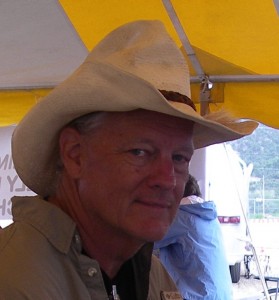Kyuquot bay on the north Pacific side of Vancouver Island was commercial fishing site until it was fished out. Now it is the home of the Rugged Point Lodge Owned by Matt and Kristy Guiquet. They provide ocean fishing through the summer, but in the Fall it’s fly rods on the rivers.

There are places, I hear, where salmon fishing is cast and catch on big crowded rivers, but not Kyuquot. There the rivers are small, wind through the remaining old growth timber on the island, and uncrowded. We saw one other fisherman in four days. The area is now a National Preserve. Matt allows fly fishing only with barbless hooks, and it’s catch and release. These rivers are carefully managed to bring back the historic salmon population. The surrounding area is First Nation (native Indian) land, and it is these people who provide much of the guiding and lodge staff.
Kyuquot is not next door. It takes two days the get there from Denver; the first day to fly to the city of Vancouver, and the second to fly to Cambell River followed by a three to four hour drive to Far Harbor and a thirty minute boat ride to the lodge. Each morning a twenty minute boat run gets you to one or two Zodiacs and an exciting ride up the river to the beginning of the day’s fishing. Along the way it is common to spot whales, eagles, and black bears, but it’s fish that you are after.
The season determines the fish in the river. Kings are in earlier, followed by Silvers and Chums. A few Stealhead are in the mix, but not many. Our trip late in the season found Silvers and Chums in good quantities. Fishing these rivers reminds you of trout fishing. You have to work for your catch, getting the fly to the fish, and executing a good retrieve. Ten to fifteen salmon landed a day is good.
My first Silver took the fly at the end of a fifty foot cast. I had let the weighted fly sink for a eight second count, and begun a steady fast retrieve. Strikes aren’t hard hits like you sometimes experience with a Brown taking a streamer. The line stops or becomes heave. Set the hook, and work to get the slack line through the guides without any tangles. Then watch the line rip off your reel. These fish are real rod benders. Salmon are tough. Some have the energy to swim 900 miles to the Salmon river in Idaho. The Silver on my line was only a mile from the ocean and ready to go one-on-one. I worked the fish to the bank at least three times before it could be netted, but in the end, I prevailed. That was not always the outcome.
The Silvers seemed to be in the six to twelve pound range and Chums about twice that size. They are different fish. A Silver will run, upstream, down, and across. Some you will never see until close to shore, and others will jump. I landed one that jumped eight or ten times. Seemed like it spent more time out of the water than in. Chums tend to want to get back to where they were, and will pull like hell to do so. Catch a couple of these, and you shake your arm hoping it doesn’t cramp.
I foul hooked several Chums, but no Silver. Paul, one of the guides, explained that the Chums stay close to the bottom, while the Silvers ride higher. I was dragging my fly over their backs. It doesn’t take long before you resist snagging another Chum. My first was hooked in the tail and took a very long time to land. The fish had all the advantage.
Gear doesn’t need to be special, just strong. I fished two Elkkhorn nine weights and a vintage Wright-McGill fiberglass. Reels need a good drag. Lines are two or three hundred grain shooting heads, and flies are Flashaboo on a weighted hook. “Throwing” a shooting head is different than casting a dry. It’s not hard, but you need to adjust your technique. Matt watched my cast and tried my Elkhorn Traveler rod. He wanted to know where to get one.
Finally with all the fishing, catching, and bear sighting there are times when you drop the rod tip and look. The clear water, big timber, white clouds, and tall mountains just grab you. The remoteness, the beauty, the fish, wildlife, and water are an extraordinary package that I often paused to observe.

Leave a Reply